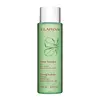What's inside
What's inside
 Key Ingredients
Key Ingredients

 Benefits
Benefits

 Concerns
Concerns

 Ingredients Side-by-side
Ingredients Side-by-side

Water
Skin ConditioningPropanediol
SolventGlycerin
HumectantSodium Ascorbyl Phosphate
AntioxidantLactic Acid
BufferingSodium Lactate
BufferingPolyglyceryl-6 Caprate
CleansingPolyglyceryl-3 Cocoate
EmulsifyingPolyglyceryl-3 Caprate
EmulsifyingPolyglyceryl-6 Ricinoleate
EmulsifyingAloe Barbadensis Leaf Juice
Skin ConditioningPanthenol
Skin ConditioningSodium Anisate
AntimicrobialSodium Levulinate
Skin ConditioningGlyceryl Caprylate
EmollientChamomilla Recutita Flower Extract
MaskingPunica Granatum Seed Extract
Skin ConditioningPrunus Armeniaca Kernel Oil
MaskingTocopherol
AntioxidantXanthan Gum
EmulsifyingCamellia Sinensis Leaf Extract
AntimicrobialWater, Propanediol, Glycerin, Sodium Ascorbyl Phosphate, Lactic Acid, Sodium Lactate, Polyglyceryl-6 Caprate, Polyglyceryl-3 Cocoate, Polyglyceryl-3 Caprate, Polyglyceryl-6 Ricinoleate, Aloe Barbadensis Leaf Juice, Panthenol, Sodium Anisate, Sodium Levulinate, Glyceryl Caprylate, Chamomilla Recutita Flower Extract, Punica Granatum Seed Extract, Prunus Armeniaca Kernel Oil, Tocopherol, Xanthan Gum, Camellia Sinensis Leaf Extract
Water
Skin ConditioningPropanediol
SolventAloe Barbadensis Leaf Juice
Skin ConditioningPropylene Glycol
HumectantGlycerin
HumectantOleth-20
CleansingSodium Chloride
MaskingPhenoxyethanol
PreservativeDisodium EDTA
Methylparaben
PreservativeParfum
MaskingSodium Citrate
BufferingPanthenol
Skin ConditioningAlpha-Glucan Oligosaccharide
CleansingHamamelis Virginiana Water
AstringentPsidium Guajava Fruit Extract
AstringentIris Florentina Root Extract
MaskingLinalool
PerfumingBenzyl Salicylate
PerfumingLimonene
PerfumingHydroxycitronellal
PerfumingGlucose
HumectantBenzyl Benzoate
AntimicrobialHexyl Cinnamal
PerfumingCrataegus Monogyna Flower Extract
Skin ConditioningCitric Acid
BufferingPotassium Sorbate
PreservativeSodium Benzoate
MaskingZinc Sulfate
AntimicrobialSorbic Acid
PreservativeCI 19140
Cosmetic ColorantCI 42090
Cosmetic ColorantSilica
AbrasiveWater, Propanediol, Aloe Barbadensis Leaf Juice, Propylene Glycol, Glycerin, Oleth-20, Sodium Chloride, Phenoxyethanol, Disodium EDTA, Methylparaben, Parfum, Sodium Citrate, Panthenol, Alpha-Glucan Oligosaccharide, Hamamelis Virginiana Water, Psidium Guajava Fruit Extract, Iris Florentina Root Extract, Linalool, Benzyl Salicylate, Limonene, Hydroxycitronellal, Glucose, Benzyl Benzoate, Hexyl Cinnamal, Crataegus Monogyna Flower Extract, Citric Acid, Potassium Sorbate, Sodium Benzoate, Zinc Sulfate, Sorbic Acid, CI 19140, CI 42090, Silica
Ingredients Explained
These ingredients are found in both products.
Ingredients higher up in an ingredient list are typically present in a larger amount.
Aloe Barbadensis Leaf Juice comes from leaves of the aloe plant. Aloe Barbadensis Leaf Juice is best known for helping to soothe sunburns. It is also anti-inflammatory, moisturizing, antiseptic, and can help heal wounds.
Aloe is packed with good stuff including Vitamins A, C, and E. These vitamins are antioxidants, which help fight free-radicals and the damage they may cause. Free-radicals are molecules that may damage your skin cells, such as pollution.
Aloe Barbadensis Leaf Juice also contains sugars. These sugars come in the form of monosaccharides and polysaccharides, folic acid, and choline. These sugars are able to help bind moisture to skin.
It also contains minerals such as calcium, 12 anthraquinones, fatty acids, amino acids, and Vitamin B12.
Learn more about Aloe Barbadensis Leaf JuiceGlycerin is already naturally found in your skin. It helps moisturize and protect your skin.
A study from 2016 found glycerin to be more effective as a humectant than AHAs and hyaluronic acid.
As a humectant, it helps the skin stay hydrated by pulling moisture to your skin. The low molecular weight of glycerin allows it to pull moisture into the deeper layers of your skin.
Hydrated skin improves your skin barrier; Your skin barrier helps protect against irritants and bacteria.
Glycerin has also been found to have antimicrobial and antiviral properties. Due to these properties, glycerin is often used in wound and burn treatments.
In cosmetics, glycerin is usually derived from plants such as soybean or palm. However, it can also be sourced from animals, such as tallow or animal fat.
This ingredient is organic, colorless, odorless, and non-toxic.
Glycerin is the name for this ingredient in American English. British English uses Glycerol/Glycerine.
Learn more about GlycerinPanthenol is a common ingredient that helps hydrate and soothe the skin. It is found naturally in our skin and hair.
There are two forms of panthenol: D and L.
D-panthenol is also known as dexpanthenol. Most cosmetics use dexpanthenol or a mixture of D and L-panthenol.
Panthenol is famous due to its ability to go deeper into the skin's layers. Using this ingredient has numerous pros (and no cons):
Like hyaluronic acid, panthenol is a humectant. Humectants are able to bind and hold large amounts of water to keep skin hydrated.
This ingredient works well for wound healing. It works by increasing tissue in the wound and helps close open wounds.
Once oxidized, panthenol converts to pantothenic acid. Panthothenic acid is found in all living cells.
This ingredient is also referred to as pro-vitamin B5.
Learn more about PanthenolPropanediol is an all-star ingredient. It softens, hydrates, and smooths the skin.
It’s often used to:
Propanediol is not likely to cause sensitivity and considered safe to use. It is derived from corn or petroleum with a clear color and no scent.
Learn more about PropanediolWater. It's the most common cosmetic ingredient of all. You'll usually see it at the top of ingredient lists, meaning that it makes up the largest part of the product.
So why is it so popular? Water most often acts as a solvent - this means that it helps dissolve other ingredients into the formulation.
You'll also recognize water as that liquid we all need to stay alive. If you see this, drink a glass of water. Stay hydrated!
Learn more about Water